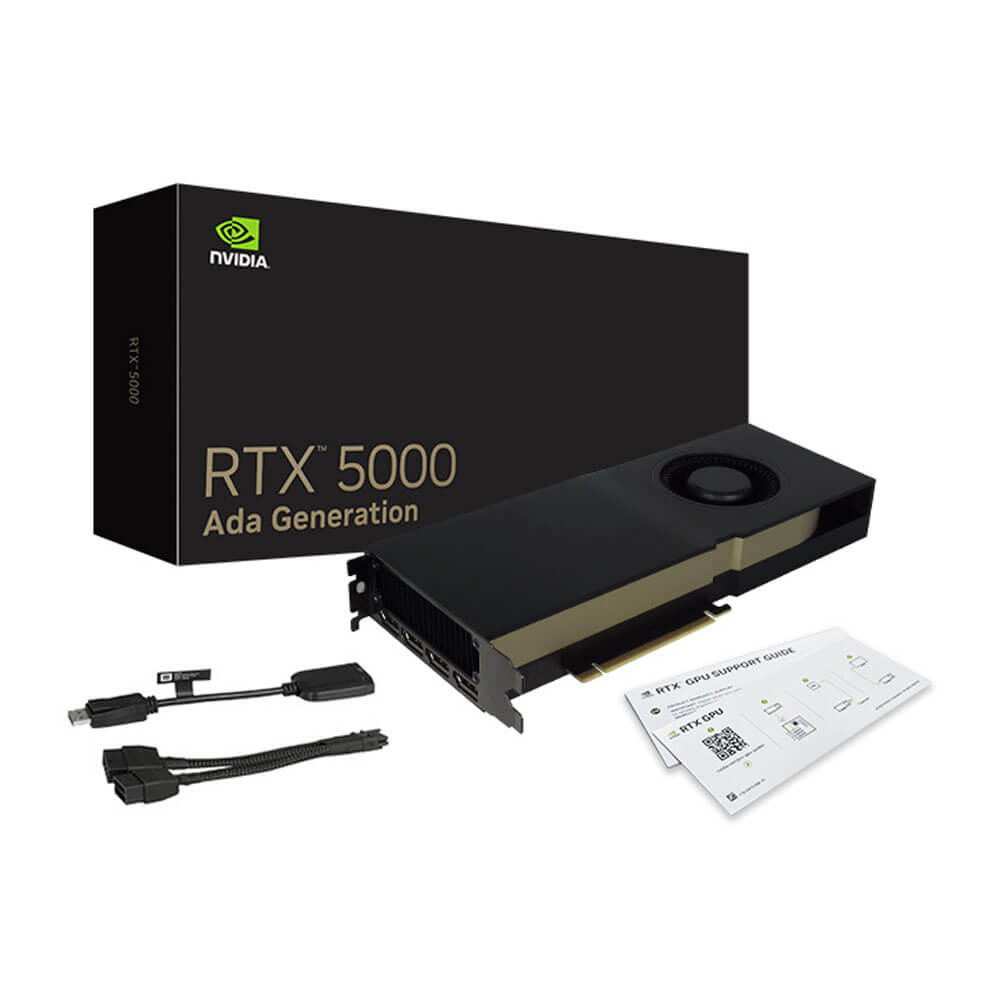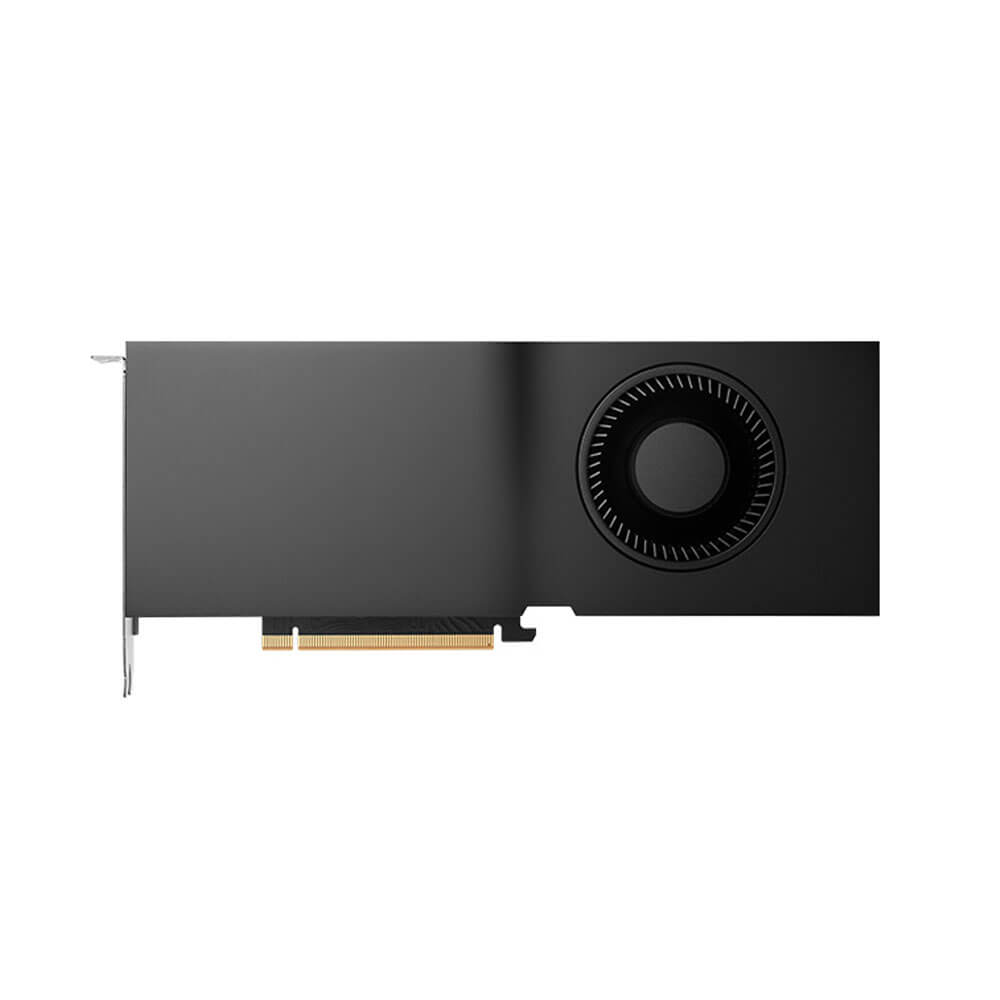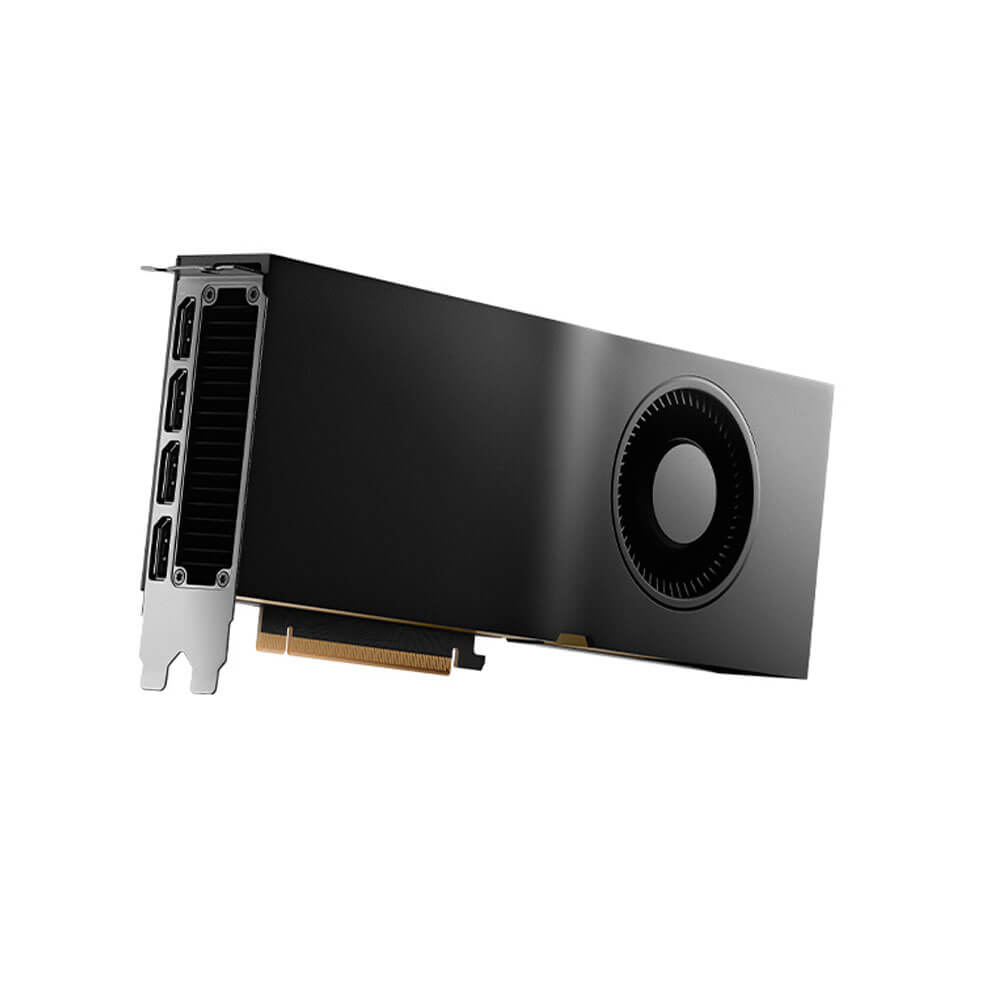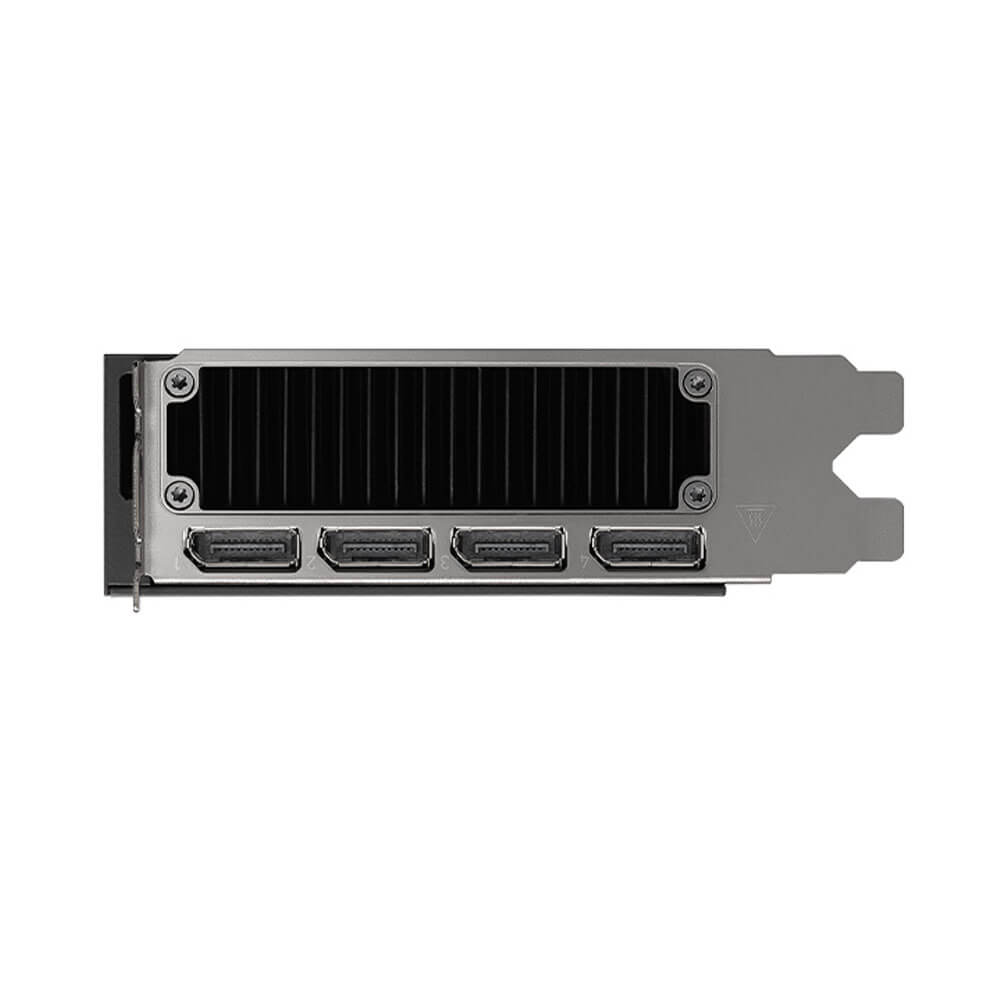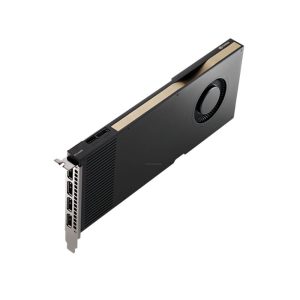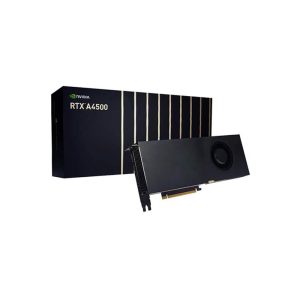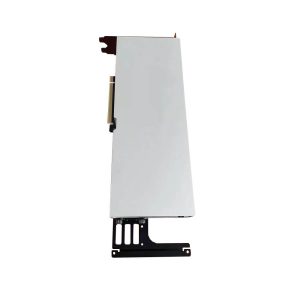NVIDIA RTX 5000 Ada Graphics Card 32GB GDDR6
The NVIDIA RTX 5000 Ada Graphics Card with 32GB GDDR6 memory delivers exceptional performance for AI, graphics, and high-performance computing. Powered by the Ada Lovelace architecture, it features advanced RT and Tensor Cores for real-time ray tracing and AI acceleration. Ideal for creative professionals and enterprise applications, the RTX 5000 Ada ensures scalability, efficiency, and stunning visuals for demanding workflows.
Min. Quantity – 5 Nos
Note: Below are the approximate and promotional prices. For the latest pricing and further details, please WhatsApp or call us at +91-8903657999.
₹366,500 ₹681,999
The RTX 5000 Ada Generation is a professional graphics card by NVIDIA, launched on August 9th, 2023. Built on the 5 nm process, and based on the AD102 graphics processor, in its AD102 variant, the card supports DirectX 12 Ultimate. The AD102 graphics processor is a large chip with a die area of 609 mm² and 76,300 million transistors. Unlike the fully unlocked TITAN Ada, which uses the same GPU but has all 18432 shaders enabled, NVIDIA has disabled some shading units on the RTX 5000 Ada Generation to reach the product’s target shader count. It features 12800 shading units, 400 texture mapping units, and 176 ROPs. Also included are 400 tensor cores which help improve the speed of machine learning applications. The card also has 100 raytracing acceleration cores. NVIDIA has paired 32 GB GDDR6 memory with the RTX 5000 Ada Generation, which are connected using a 256-bit memory interface. The GPU is operating at a frequency of 1155 MHz, which can be boosted up to 2550 MHz, memory is running at 2250 MHz (18 Gbps effective).
Being a dual-slot card, the NVIDIA RTX 5000 Ada Generation draws power from 1x 16-pin power connector, with power draw rated at 250 W maximum. Display outputs include: 4x DisplayPort 1.4a. RTX 5000 Ada Generation is connected to the rest of the system using a PCI-Express 4.0 x16 interface. The card measures 267 mm in length, 112 mm in width, and features a dual-slot cooling solution.
Key Features:
- Ada Lovelace Architecture
- CUDA Cores
-
- Equipped with 15,360 CUDA cores, the RTX 5000 provides immense parallel processing power for high-performance computing tasks, complex simulations, and demanding 3D workflows.
- 4th-Generation Tensor Cores
-
- Optimized for AI and machine learning, these cores accelerate deep learning training and inference tasks with support for mixed precision formats like FP8, FP16, and INT8.
- 3rd-Generation RT Cores
-
- Delivers up to 2x faster ray tracing performance compared to previous-generation GPUs, enabling realistic lighting, shadows, and reflections in real time.
- 32GB GDDR6 Memory
- High-Capacity Memory
- The 32GB GDDR6 memory ensures seamless performance when working with large datasets, complex AI models, high-resolution textures, and detailed 3D assets.
- High Bandwidth
- A 256-bit memory interface ensures fast and efficient data access, crucial for memory-intensive tasks like video rendering and AI workloads.
- Advanced Technologies
- DLSS 3.0
- NVIDIA’s AI-powered Deep Learning Super Sampling boosts frame rates and enhances image quality, allowing for smooth performance even in resource-intensive games and applications.
- NVIDIA Reflex
- Reduces latency, making the RTX 5000 an excellent choice for gaming and interactive design workflows.
- Multi-Instance GPU (MIG)
- Enables multiple virtual GPUs for shared resources, increasing productivity in multi-user or multi-tasking environments.
- Connectivity and Display
- HDMI 2.1 and DisplayPort 1.4a
- Supports 8K at 60Hz and 4K at 120Hz, ensuring compatibility with high-resolution displays for professional applications and gaming.
- PCIe 5.0 Support
- Delivers faster data transfer speeds, enabling seamless performance for bandwidth-intensive tasks.
- Energy Efficiency and Cooling
- Efficient Power Usage
- Designed for energy efficiency, the RTX 5000 consumes less power while delivering higher performance, reducing operational costs.
- Advanced Cooling Design
- Features a sophisticated cooling system to maintain peak performance even under sustained workloads.
Applications:
- Artificial Intelligence and Machine Learning
-
- AI Training and Inference: Accelerates deep learning workflows, enabling faster training of neural networks and real-time inferencing.
- Data Science and Analytics: Handles large-scale datasets for data preprocessing, analytics, and predictive modeling.
- High-Performance Computing (HPC)
-
- Scientific Simulations: Powers simulations in physics, climate science, and genomics that require massive parallel computation.
- Big Data Processing: Efficiently processes and analyzes large datasets, driving faster insights in fields like finance, healthcare, and retail.
- Content Creation
-
- 3D Rendering and Animation: Handles complex rendering tasks with real-time ray tracing, enabling faster iterations in tools like Blender, Maya, and Cinema 4D.
- Video Editing: Provides smooth performance for 4K/8K video editing, color grading, and effects rendering in Adobe Premiere Pro and DaVinci Resolve.
- Design and Engineering
-
- CAD and CAM: Accelerates workflows in CAD software like AutoCAD and SOLIDWORKS, allowing engineers to visualize and refine designs in real time.
- Digital Twins and Prototyping: Supports real-time simulations for product design and industrial applications.
- Gaming and Visualization
-
- High-Performance Gaming: Delivers ultra-smooth gameplay at 4K and beyond with real-time ray tracing and DLSS 3.0.
- Virtual Reality (VR): Powers immersive VR experiences for gaming, training, and simulation applications.
Why Choose the NVIDIA RTX 5000 Ada Graphics Card 32GB GDDR6?
- Powerful Performance for Demanding Workflows
-
- With 15,360 CUDA cores, 4th-gen Tensor Cores, and 3rd-gen RT Cores, the RTX 5000 is ideal for intensive workloads like AI training, 3D rendering, and high-resolution gaming.
- Massive Memory Capacity
-
- The 32GB GDDR6 memory ensures smooth operation for memory-intensive tasks, from large-scale AI models to complex simulations and video editing.
- Future-Proof Technology
-
- Features like PCIe 5.0, HDMI 2.1, and DisplayPort 1.4a make the RTX 5000 ready for emerging technologies and high-bandwidth applications.
- Versatility Across Industries
-
- From content creation and engineering to AI research and gaming, the RTX 5000 caters to a wide range of professional and enthusiast needs.
- Energy Efficiency and Cooling
-
- Advanced energy optimization and thermal management make the RTX 5000 suitable for extended use in professional workstations and gaming setups.
- Enterprise-Grade Reliability
-
- Backed by NVIDIA’s professional drivers and software ecosystem, the RTX 5000 ensures stable and reliable performance for mission-critical applications.
| Product Name | NVIDIA RTX 5000 Ada |
| Manufacturer | NVIDIA |
| Memory | 32GB GDDR6 |
| Memory Bus | 256 bit |
| Bandwidth | 576.0 GB/s |
| Base Clock | 1155 MHz |
| Boost Clock | 2550 MHz |
| TDP | 250 W |
| PSU | 600 W |
| Outputs | 4x DisplayPort 1.4a |
| Power Connectors | 1x 16-pin |
| Bus Interface | PCIe 4.0 x16 |
| Maximum Resolution | 7680 x 4320 (8K) |
| Dimensions | 11.2 inches (285mm) x 5.4 inches (137mm) x 1.5 inches (38mm) |

